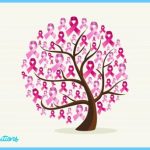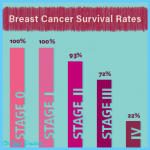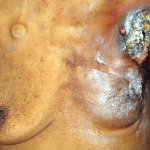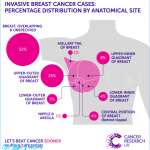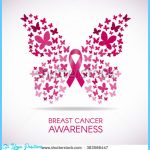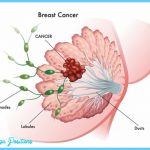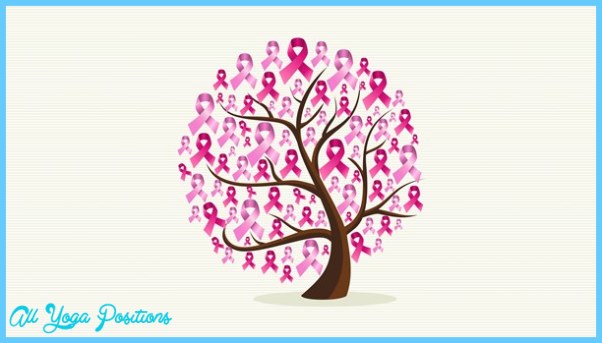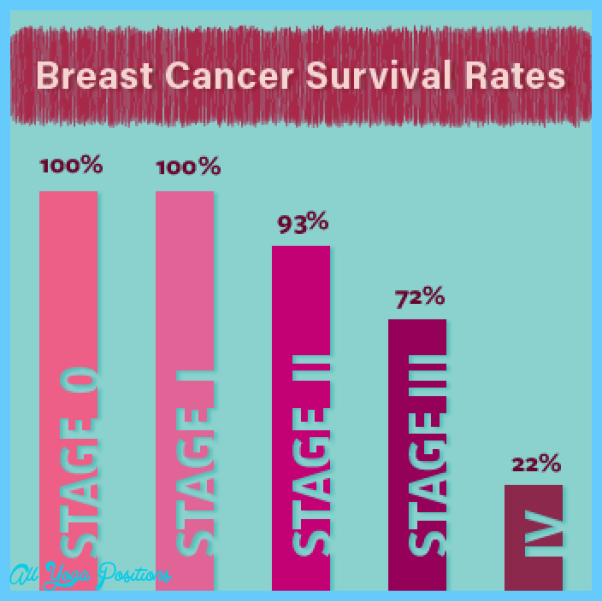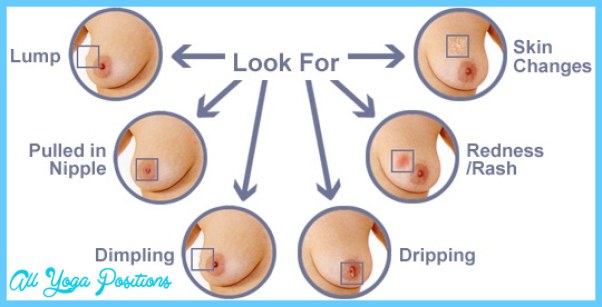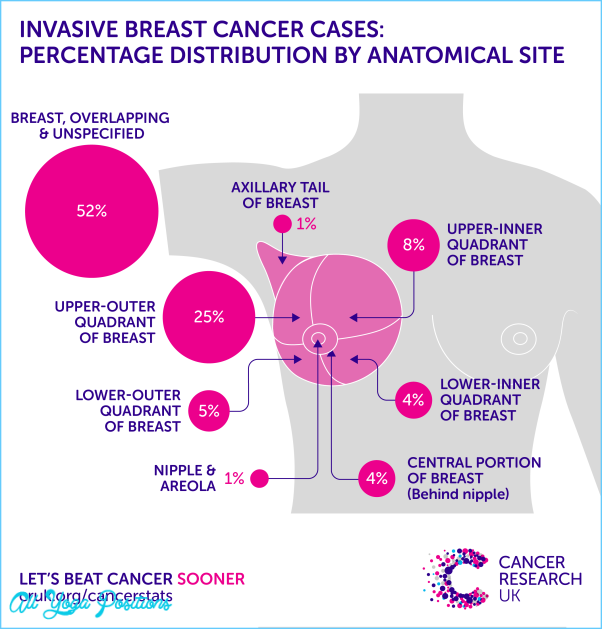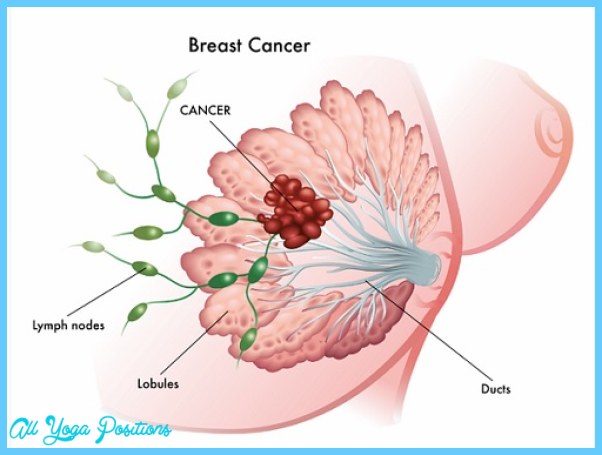Breast Cancer
Breast cancer is the most common cancer in women and causes about half as many deaths in women as lung cancer. In the United States, about 1 in 8 women will get breast cancer, and 1 woman in 30 will die from the disease. Breast cancer occurs only rarely in men.
Risk Factors There is a strong genetic factor in breast cancer. A woman who has two close relatives with breast cancer is more than four times more likely to develop the disease than a woman who has no relatives with it. However, only about 15% of breast cancers occur in women with a family history of the disease.
Other risk factors include these:
• Early-onset menstruation or late-onset menopause
• Having no children or having a first child after age 30
• Current use of hormone replacement therapy
• Obesity
• Alcohol use
The female hormone estrogen may be a unifying element for some of these risk factors. Estrogen promotes cell growth in responsive tissues, such as the breast and uterus, so any factor that increases estrogen exposure may raise the risk of breast cancer. Fat cells produce estrogen, and estrogen levels are higher in obese women. Alcohol can increase estrogen in the blood as well.
Prevention Although some risk factors cannot be changed, important lifestyle risk factors can be controlled. Eating a low-fat, vegetable-rich diet, exercising regularly, limiting alcohol intake, and maintaining a healthy body weight can minimize the chance of developing breast cancer, even for women at risk from family history or other factors.
Detection The ACS stresses early detection of breast cancer through a three-part approach:
• Mammography. A mammogram is a low-dose breast X-ray that can spot breast abnormalities before physical symptoms arise. A newer type of mammography, called digital mammography, may provide more accurate results in some women, as may magnetic resonance imaging (MRI). The ACS recommends that women over 40 get a mammogram every year.
Breast Cancer Photo Gallery
• Clinical breast exams. The ACS recommends that women between the ages of 20 and 39 have a clinical breast exam every three years and that women over 40 have one every year.
• Breast self-exams. By doing breast self-exams (BSEs), a woman can become familiar with her breasts and alert her physician to any changes (see the box “Breast Awareness and Self-Exam”). Although the ACS encourages all women to perform regular BSEs, many women elect not to do them, fearing they may not perform them correctly. When women learn proper self-exam technique from a health care professional, however, they are much more likely to regularly examine their breasts. Women who choose to do self-exams should begin at age 20.
If any of these methods detects a lump in the breast, it can be biopsied or scanned by ultrasonography to determine whether it is cancerous. Most lumps are benign.
In 2009, the U.S. Preventive Services Task Force (USPSTF) recommended against routine mammography before age 50, citing the anxiety and distress caused by false-positive results. The USPSTF also recommended against teaching BSE. The debate about screening guidelines continues.
Treatment If a lump is cancerous, one of several surgical treatments may be used, ranging from a lumpectomy (removal of the lump and surrounding tissue) to a mastectomy (removal of the breast). Chemotherapy or radiation treatment may also be used to eradicate as many cancerous cells as possible.
Several drugs have been developed for preventing and treating breast cancer. These include selective estrogen-receptor modulators (SERMs), which act like estrogen in some tissues but block estrogen’s effects in others. The two best-known SERMs are tamoxifen and raloxifene. Another category of drug, called trastuzumab, is a special type of antibody that binds to a specific cancer-related target in the body. Regardless of the treatments used, social support can also affect a patient’s psychological and physical wellness.
If the tumor is discovered early, before it has spread to the adjacent lymph nodes, the patient with breast cancer has about a 98% chance of surviving more than five years. The survival rate for all stages is 89% at five years.


